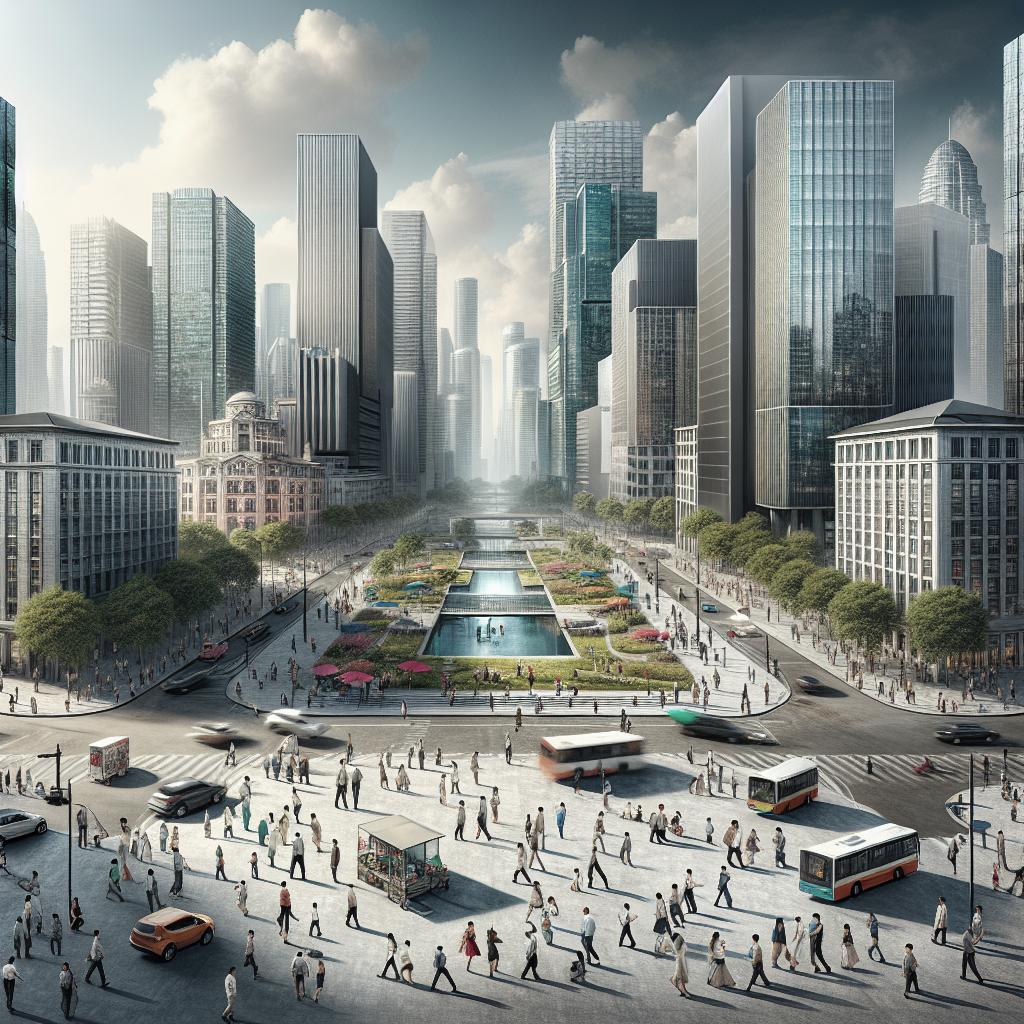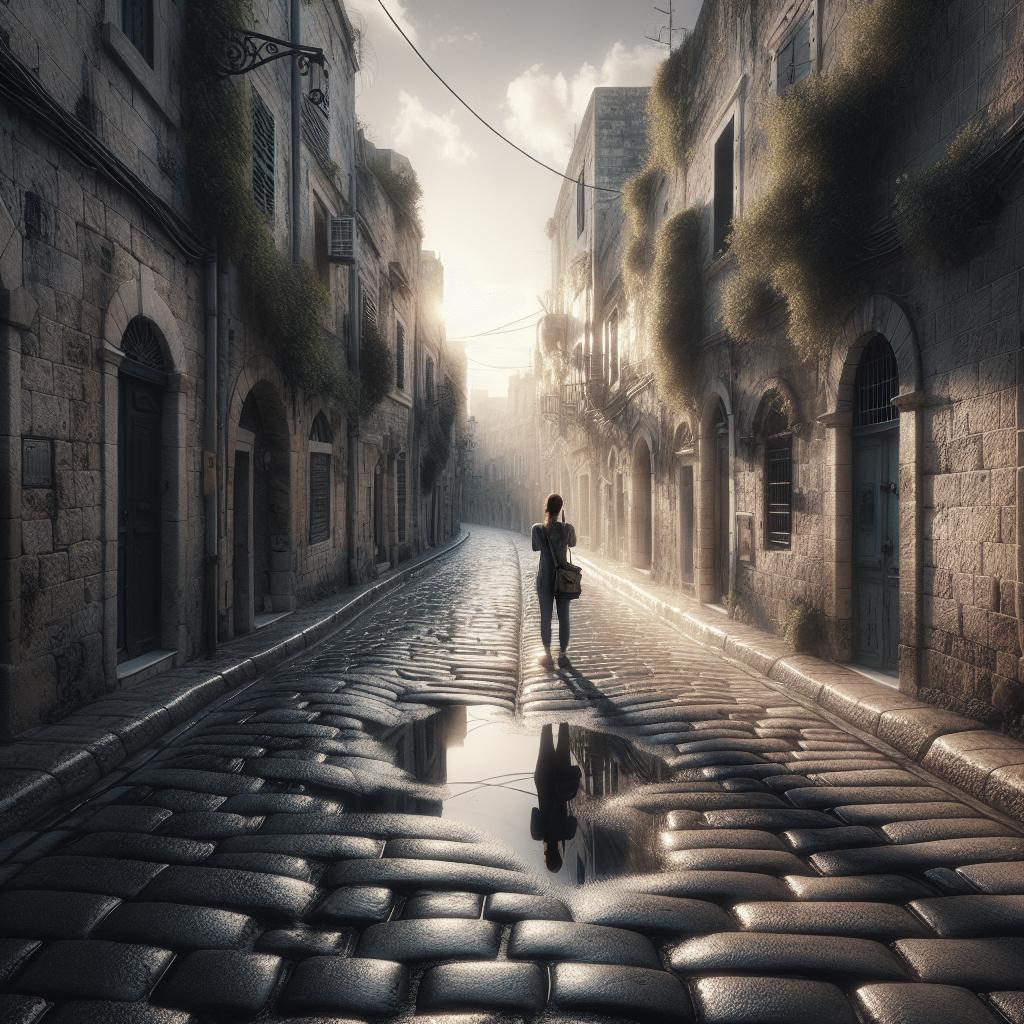<>
Capturing the essence of an urban landscape is more than just shooting cityscapes; it involves conveying a deeper narrative, drawing out the soul of the urban environment, and engaging viewers with the life and stories within those spaces. This blog post will unravel what urban landscape photography entails, examining it through critical lenses, and exploring the works of renowned photographers like Charles Marville, Sze Tsung Leong, Michael Wolf, Nadav Kandar, and Gregory Crewdson. We will delve into the techniques and elements that make their works iconic, and provide you with practical steps and tips to emulate these styles in your own photography. Finally, we will sum up the key takeaways in a clear and concise table for quick reference. Whether you are a novice or seasoned photographer, this guide aims to inspire and elevate your urban photography endeavors.
What is urban landscape photography?
Urban landscape photography is a genre focused on capturing the essence of cities and towns. Unlike traditional landscape photography that frames natural scenery, urban landscape photography emphasizes human-made environments such as buildings, streets, and public spaces. This type of photography often seeks to tell stories about a city’s culture, history, and societal issues. Urban landscape photography can portray the grandeur of a metropolitan skyline, the gritty realism of an industrial area, or the intimate charm of a hidden alleyway. It often requires a keen eye for composition, light, and timing, as well as an understanding of the urban environment’s dynamics. By combining an artistic vision with technical skills, photographers can create compelling images that resonate with viewers.
Urban landscape photography through a critical lens.
Taking a critical approach to urban landscape photography involves analyzing how photographs depict urban life and its complexities. Critical urban photography often challenges traditional aesthetics, focusing on social, political, and economic narratives within the urban fabric. This genre can highlight issues like urban decay, gentrification, and the juxtaposition of wealth and poverty. It can serve as a powerful medium for storytelling, documenting changes within cities, and evoking emotional responses from viewers. By exploring the works of renowned photographers, we can better understand how they capture the essence of urban landscapes and inspire our own creative processes.
Charles Marville:
Charles Marville was a 19th-century French photographer known for his documentation of Paris before its modernization. His work offers a glimpse into Parisian life before the extensive reconstruction led by Baron Haussmann. Marville’s photographs capture the old streets, buildings, and monuments that were soon to be replaced. Marville’s work is significant because it serves as a historical record, preserving the memory of old Paris. His use of wide-angle lenses and long exposure techniques allowed him to capture detailed and expansive urban scenes. Modern photographers can draw inspiration from Marville’s ability to document a city in transition, emphasizing the importance of preserving urban heritage.
Sze Tsung Leong:
Sze Tsung Leong is a contemporary photographer known for his global urban landscape series, “Cities.” He travels worldwide, capturing the character of different cities with a unique blend of modernity and antiquity. His photographs often feature large-scale views that highlight the density and complexity of urban environments. Leong’s work emphasizes the interconnectedness of global cities while showcasing their distinct identities. His balanced compositions and attention to architectural details encourage viewers to reflect on the similarities and differences among cities. Emerging photographers can learn from Leong’s approach by exploring how various cities maintain their uniqueness amidst globalization.
Michael Wolf:
Michael Wolf’s photography focuses on the dense, crowded urban environments of mega-cities, particularly in Asia. His series “Architecture of Density” showcases the overwhelming verticality and repetitive patterns of residential buildings in cities like Hong Kong. Wolf’s work highlights issues such as overpopulation, housing crises, and the alienation within crowded urban spaces. His eye for patterns and human elements hidden within the architectural facade offers a fresh perspective on urban life. Photographers can take cues from Wolf’s ability to find order and meaning in seemingly chaotic urban landscapes.
Nadav Kandar:
Nadav Kandar is acclaimed for his intimate and often poetic portraits of urban environments. His series “Yangtze – The Long River” documents the rapid industrialization and urbanization along China’s Yangtze River, blending human presence with expansive landscapes. Kandar’s use of muted colors and dramatic lighting creates a contemplative atmosphere, inviting viewers to ponder the impact of progress on natural and urban landscapes. His approach demonstrates how to infuse emotion and narrative into urban landscape photography, making it more than just a visual record but a commentary on societal change.
Gregory Crewdson:
Gregory Crewdson is known for his elaborate and cinematic approach to urban photography. His meticulously staged scenes often appear surreal, blending elements of reality and fiction. Crewdson’s work explores the subliminal aspects of suburban and urban life, capturing moments that evoke a sense of mystery and unease. Crewdson’s attention to detail, use of artificial lighting, and narrative-driven compositions create a unique photographic style. Photographers aspiring to emulate his work should consider the importance of planning, storytelling, and the emotional undertones of their images. Crewdson’s work reminds us that urban photography can transcend mere documentation to become a form of visual storytelling.
But how do you create urban landscape photography like these?
Creating compelling urban landscape photography involves several key steps and considerations. First, understanding the essence of your chosen location is critical. Spend time immersing yourself in the environment, observing its rhythms and unique characteristics. Take note of the light, shadows, and architectural details that can make your images stand out. Next, focus on composition and framing. Use leading lines, symmetry, and patterns to draw the viewer’s eye into the photograph. Experiment with different perspectives, such as shooting from high vantage points or low angles, to add depth and interest to your images. Incorporating human elements, like people or vehicles, can also add a dynamic layer to the narrative. Lighting is another crucial element in urban landscape photography. Early morning or late afternoon light, known as the “golden hour,” can cast a warm, soft glow on your subjects. Alternatively, shooting at night or during blue hour (the period just after sunset) can create dramatic contrasts and highlight urban illumination. Use long exposures to capture light trails and motion, adding a sense of energy and movement to your images. Finally, don’t shy away from post-processing. Editing software can help you enhance colors, adjust exposure, and fine-tune details, bringing your vision to life. However, aim for a natural look that stays true to the scene’s essence without over-processing. Practice and experimentation are key to developing your style and capturing urban landscapes that resonate with viewers.
Conclusion:
To distill the insights from this blog post, here is a summary table encapsulating each photographer’s approach, key techniques, and tips for aspiring photographers: “`
| Photographer | Approach | Key Techniques | Tips for Aspiring Photographers |
|---|---|---|---|
| Charles Marville | Documenting historical Paris before modernization | Wide-angle lenses, long exposure | Preserve urban heritage; document cities in transition |
| Sze Tsung Leong | Capturing global urban landscapes | Large-scale views, balanced compositions | Explore uniqueness of cities amidst globalization |
| Michael Wolf | Focusing on dense urban environments | Patterns, human elements within architecture | Find order and meaning in chaotic landscapes |
| Nadav Kandar | Documenting industrialization and urbanization | Muted colors, dramatic lighting | Infuse emotion and narrative into photographs |
| Gregory Crewdson | Cinematic and surreal urban scenes | Detail-oriented, artificial lighting, narrative-driven | Focus on planning, storytelling, and emotional undertones |
“`
Like this? – Check out more free tutorials below
If you found this tutorial on capturing the essence of urban landscapes helpful, be sure to explore more of our free photography tutorials. Gain insights from experts, learn new techniques, and elevate your skills. Happy shooting!


